Hello everyone, and welcome back to another historical blog for Dell’arte Della Guerra. Today, in a similar fashion to our previous blog, we are going to explain the process by which our team creates reconstitutions of late medieval armor used in the British isles.
This blog will be our first glimpse at one of our lesser known factions: the Kingdom of Scotland. This kingdom, under the rule of James III of the house of Stuart, in possession of the Crown since the 14th century, has been largely overshadowed by its southern warring neighbor in the context of the late medieval period. But despite this lack of focus on them, the Kingdom of Scotland was in no way a peaceful state going by without notice: much like England, it was rife with internal tensions, plotting nobles, and armed conflict. Traditionally Scotland has been known to be divided into two geographically and culturally distinct regions known as the Highlands and Lowlands. While both areas were nominally under the control of the Crown of Scotland, whose core power was centered in the towns of the Lowlands around the court at Edinburgh, most of the Highlands were de facto controlled by various gaelic clans whose leader was the Lord of the Isles of the house of Mc Donald. These areas represent distinct culture groups with different approaches to war, fashion and ultimately in our settings, different factions. Thus in this blog, we wish to focus on matters relating to the Lowland culture and its wartime practices.
The approximate frontier between the Scots' Lowlands and the gaelic's Highlands
Not unlike England, the Lowland Scots were known to quite often fight on foot regardless of status, including Men-at-arms. But unlike England where the main tactic was a mass of longbowmen supported by Men-at-arms and infantry with bills and axes, the majority of Lowlanders wielded spears that we might call pikes, in a formation known as a schiltron. This pike block famously employed at the battle of Bannockburn in 1314 against the English, will continue to be the main tactics employed by Scots into the 16th century. Putting such an emphasis on foot combat, it is thus not surprising to find that the plate armor worn in Scotland reflected this style of combat. Where we find asymmetrical armors with large pauldrons, large plackart and tassets designed to sustain powerful couched lance blows in England, reflecting continental fashion, most Scottish armor seems to continue using armor with long plate skirts, symmetrical pauldrons and great bascinets, suited to fighting on foot, as was quite common to wear in France and England some decades before. But you might wonder, how do we know this?
Compared to the Continent, and even to England, sources on Scottish armor are rather scarce. Aside from fragments of brigandine, no armor from the period survived. Scottish written accounts are very few and not very descriptive and aren’t self-sufficient when it comes to reconstructing what they wore. Thus we largely have to rely on various artistic depictions, which for our period are also pretty scarce, due to centuries of war, iconoclasm and weathering. One of the best known visual sources for scottish full plate armor might be a late 1440’s illustrated manuscript of Walter Bower’s Scotichronicon. In this manuscript, Men-at-arms wielding axes and long spears are shown wearing bascinet, symmetrical arm armor, and no tasset as previously mentioned. For the period of 1460-80, the real focus of our mod, our best type of visual sources are tomb effigies. Dr Tobias Capwell, in his three part book series called Armour of the English Knight, has shown the crucial importance of effigies for the study of plate armor in England, and the same is true for Scotland. His research was instrumental in starting our research for this project, notably his paper “Observations on the Armour Depicted on Three Mid 15th-Century Military Effigies in the Kirk of St. Nicholas, Aberdeen”.
Late 1440's illustrated manuscript of Walter Bower's Scotichronicon showing Men-at-arms with pikes.
In this paper, Dr. Capwell defines different styles of effigies based on the armor they wear, some of which he dubbed the Borthwick group, after William Borthwick, whose effigy is the finest example of the lot. Most of these effigies are dated by Capwell between 1440 and 1465, but Lord Borthwick died two decades later, making his effigy probably the most recent one, and thus the most relevant one for us. Capwell doesn’t include pictures of the effigy, and we thus had to contact people who have researched it in person. [Thanks to the help of Kestrel Robinson who studied the matter] we were able to obtain detailed pictures of most of the Borthwick group effigies. Some of the proportions of the figures depicted have been subject to some back-and-forth in our team: the length of the plate skirt, of the pauldrons, etc. Comparing it to extant armors such as surviving French great bascinet, Italian backplates and such, we were able to get the right proportions, with four plates on the pauldrons and six lames on the skirt. Our modeler CarameL then made two versions of said concept with different details.
Effigy of a knight at Seton church, mid 15th century, alongside one of our Scottish armors.
Almost complete mid century French great bascinet held in Paris, compared to our 3D model.
Before rendering said armor, we wanted to have a distinctively Scottish polearm for the model to hold, and thus we looked at our options. Instead of a spear or axe, we settled on a more obscure weapon, a form of local glaive. Examples are found in the National Museums of Scotland database, and are defined by a long double edge straight blade attached to the side of a pole more like a scottish axe rather than a socketed english bill. 15th century written sources refer to “bugh staves” on multiple occasions. In the 16th century, a weapon fitting the description of the surviving double edged glaives mentioned is referred to as a jedburgh staff (after the border city of Jedburgh). We believe bugh staff and Jedburgh staff are likely the same weapon. Manufactured near the English border, this weapon was influenced by the glaives of the Englishman and remained a popular weapon among pillagers in that area, but saw more widespread use in Scotland in the 15th to 17th century. One of our modelers, Stranger, then modeled this weapon based on the surviving exemples and thus our render could be complete. We hope this rundown of our research and making process was informative and we hope that you look forward to playing as or against the Scots in this mod.
Side by side comparison of the Borthwick effigy along with a surviving jedbugh staff, with our final render.
For more details of the armor, go here Artstation.com. Until next time, take care.
- the DADG team.
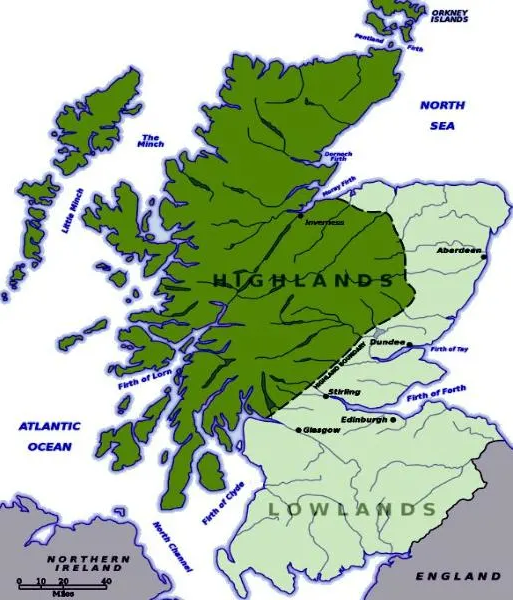
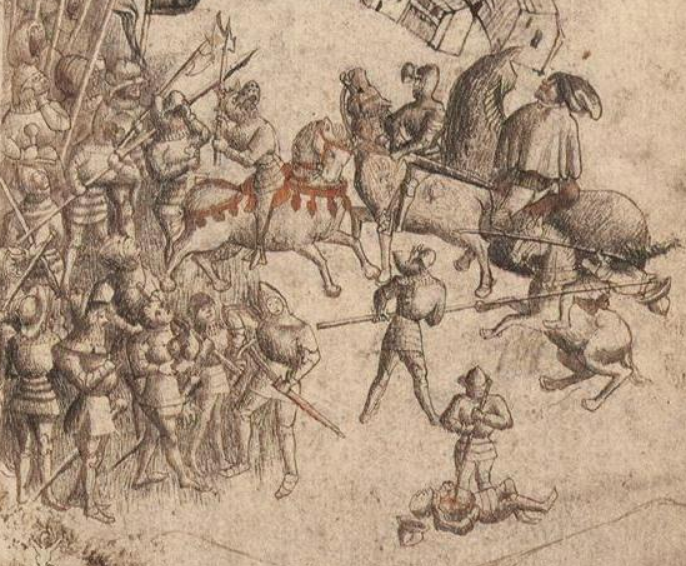
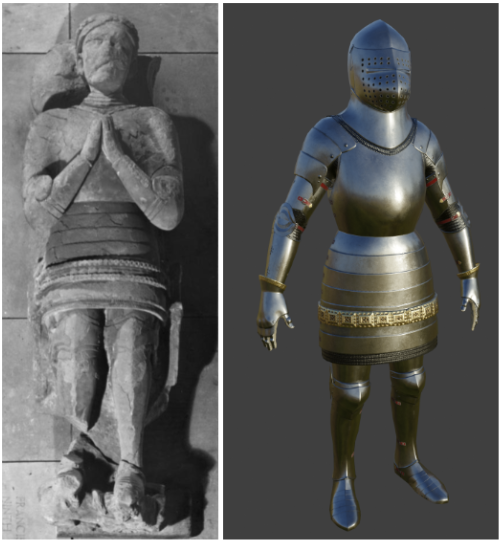
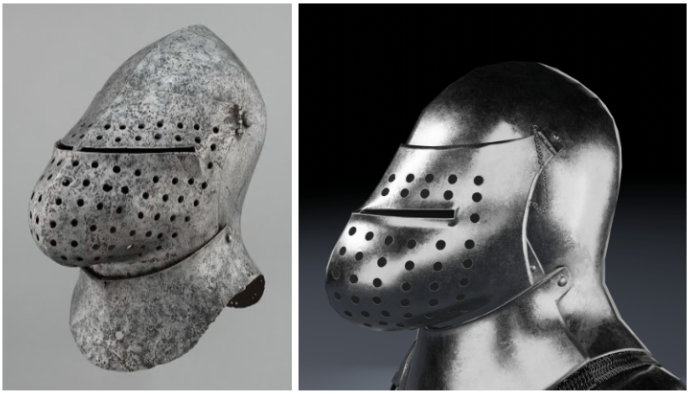
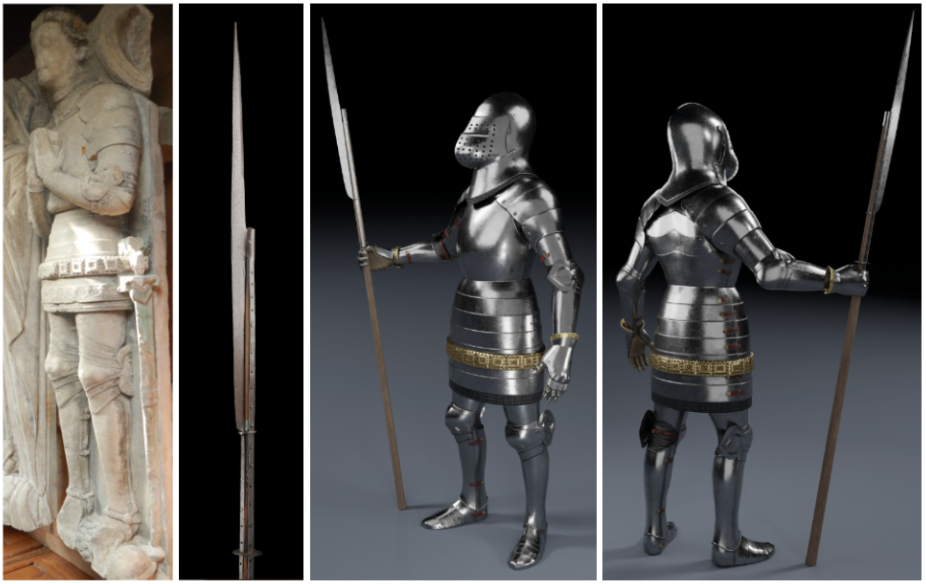



epic
Awesome armors, you are so passionate. Much respect DADG Team.